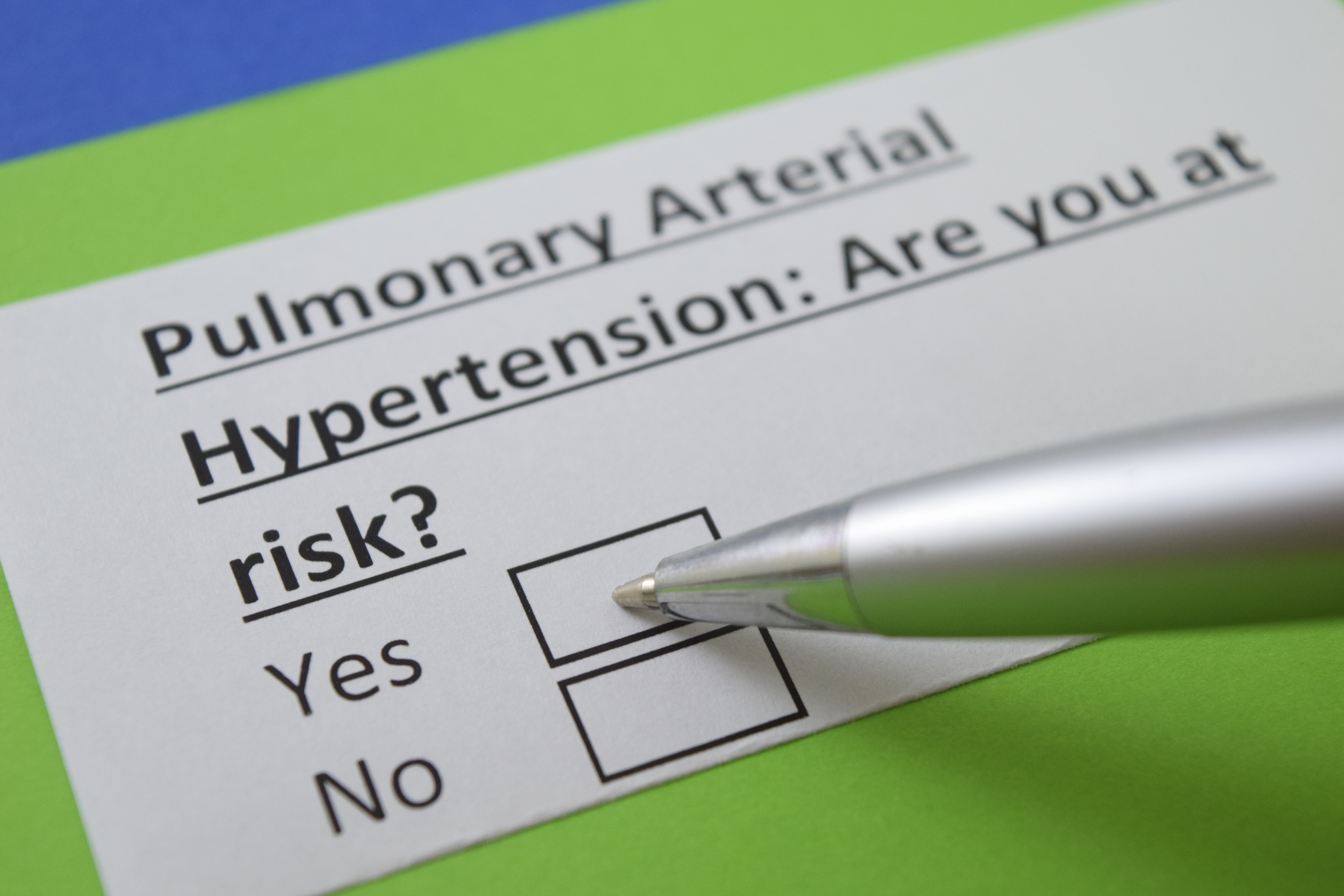Article
Sotatercept Improves Exercise Capacity in Individuals With Pulmonary Arterial Hypertension
Author(s):
The median change from baseline at week 24 in the 6-minute walk distance was 34.4 m in the sotatercept group and 1 m in the placebo group among patients with pulmonary arterial hypertension.
Recent research published in The New England Journal of Medicine has found that among patients with pulmonary arterial hypertension (PAH) who were receiving stable background therapy, treatment with sotatercept (Merck) resulted in a greater improvement in exercise capacity than placebo.
Credit: Richelle - stock.adobe.com

PAH is a progressive disease characterized by proliferative remodeling of the small pulmonary arteries and progressive luminal narrowing. The elevated pulmonary artery pressure caused by PAH strains the heart, elevating the risk for ventricular failure and death.
Common treatments currently include phosphodiesterase-5 inhibitors, endothelin-receptor antagonists, soluble guanylate cyclase stimulators, and compounds targeting the prostacyclin pathway. These treatments can be utilized as monotherapies or in combination with each other, and are known to improve pulmonary hemodynamics, exercise capacity, and progression-free survival in patients with PAH.
Median survival ranges from 5 to 7 years with these treatments, but no substantial improvements have been made in PAH treatment in the past decade, according to investigators. The high morbidity and mortality highlight the need for additional treatment options targeting the new pathways involved in pulmonary vascular remodeling.
Sotatercept is a first-in-class fusion protein consisting of the Fc domain of human immunoglobulin G (IgG). Inhibiting the TGF-b ligands with sotatercept is proposed to rebalance pulmonary vascular homeostasis toward growth-inhibiting and proapoptotic signaling. In animal models, sotatercept inhibited cell proliferation, promoted apoptosis, and alleviated inflammation in the vessel walls, resulting in the reverse remodeling and restoration of vessel patency.
To further investigate the use of sotatercept in combination with stable background therapy in adults with symptomatic pulmonary arterial hypertension, investigators undertook the STELLAR trial. The phase 3, multicenter, double-blind, randomized, placebo-controlled trial randomized adults with PAH who were receiving stable background therapy 1:1 to receive subcutaneous sotatercept or placebo every 3 weeks.
The primary endpoint was the change from baseline at week 24 in the 6-minute walk distance and there were 9 secondary endpoints: multicomponent improvement; change in pulmonary vascular resistance; change in N-terminal pro–B-type natriuretic peptide level; improvement in World Health Organization (WHO) functional class; time to death or clinical worsening; French risk score, changes in the Pulmonary Arterial Hypertension-Symptoms and Impact (PAH-SYMPACT) Physical Impacts; changes in Cardiopulmonary Symptoms score; and changes in Cognitive/Emotional Impacts domain scores. All were assessed at week 24 except for time to death or clinical worsening, which was assessed when the last patient completed the week 24 visit.
A total of 163 patients were enrolled and assigned to receive sotatercept, and 160 patients were assigned to the placebo arm. This included 79.3% female patients with a median age of 47.9. Further, 89.2% were White, 2.2% were Black, 2.2% were Asian, and 4% were another race.
The median change from baseline at week 24 in the 6-minute walk distance was 34.4 m in the sotatercept group and 1 m in the placebo group. The Hodges-Lehmann estimate of the difference between the sotatercept and placebo groups in the change from baseline at week 24 was 40.8 m.
The first 8 secondary endpoints were all significantly improved with sotatercept treatment compared with placebo, whereas the PAH-SYMPACT Cognitive/Emotional Impacts domain score was not. Of the 162 patients in the sotatercept group, 63 (38.9%) met all 3 criteria of the multicomponent improvement endpoint, compared with 16 of 159 patients (10.1%) in the placebo group.
In total, 162 of 163 patients in the sotatercept group received the maximum dose of 0.7 mg/kg during the trial period. Additionally, 145 (89%) had no dose reductions or dose delays during the 24-week trial period and 10 (6.1%) had at least 1 dose reduction as specified by the dosing guidance. Adherence to the trial regimen was 98.4% in the sotatercept group and 99% in the placebo group.
In the sotatercept arm, 84.7% of participants experienced any adverse events (AEs), including 67 (41.1%) related to sotatercept. Of those, 3 led to discontinuation and withdrawal from the trial.
AEs of special interest included increased hemoglobin level, occurring in 5.5% of the sotatercept group; thrombocytopenia, occurring in 6.1%; bleeding events, occurring in 21.5%; increased blood pressure, occurring in 3.7%; and telangiectasia, occurring in 10.4%. AEs reported in 10% or more of either the sotatercept or the placebo group included headache, COVID-19, nausea, diarrhea, fatigue, epistaxis, telangiectasia, and dizziness.
Based on these findings, the investigators concluded that treatment with sotatercept improved exercise capacity as determined by the 6-minute walk distance and showed clinical benefit across multiple efficacy endpoints. It had a favorable benefit-risk ratio, although the investigators noted that the median treatment period of 7.5 months precluded the ability to establish the long-term durability of the treatment response, including safety and AE profile. This will be investigated in the ongoing, open-label SOTERIA trial.
REFERENCE
Hoeper MM, Badesch DB, Ghofrani HA, Gibbs JSR, Gomberg-Maitland M, McLaughlin VV, et al. Phase 3 Trial of Sotatercept for Treatment of Pulmonary Arterial Hypertension. New Eng J Med. 2023;388:1478-1490. doi:10.1056/NEJMoa2213558






